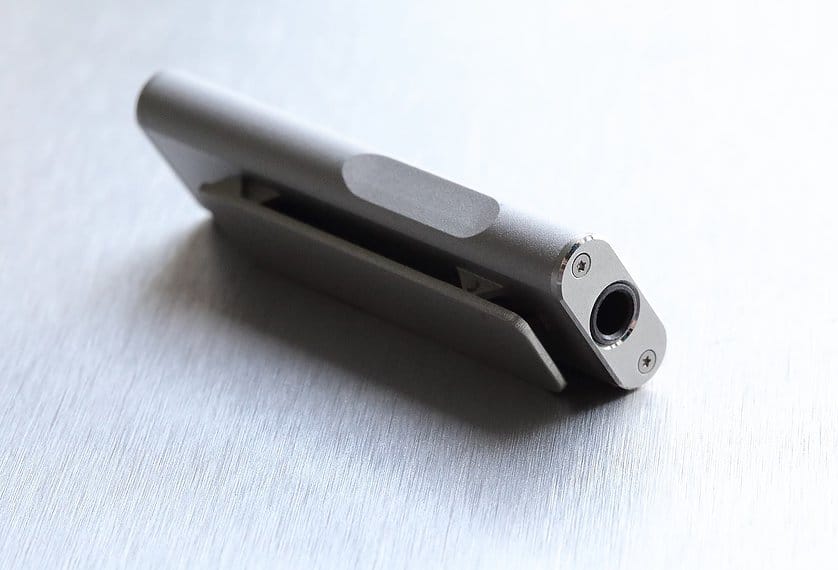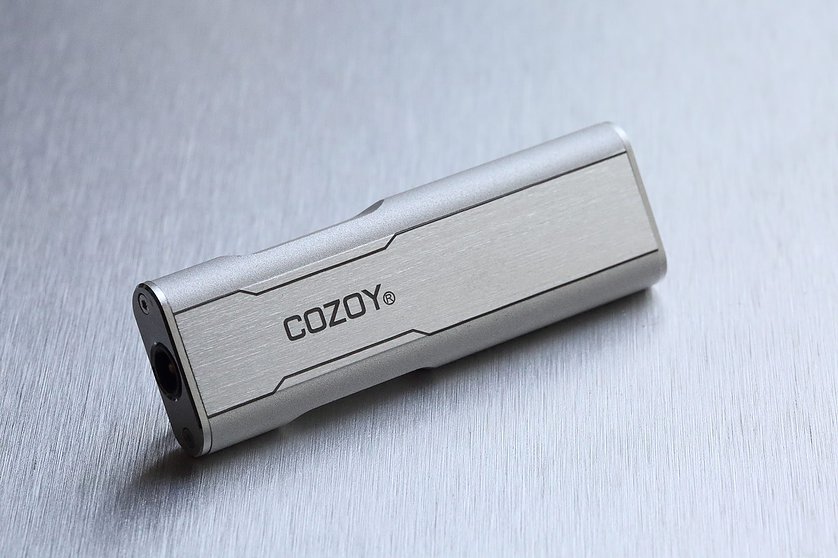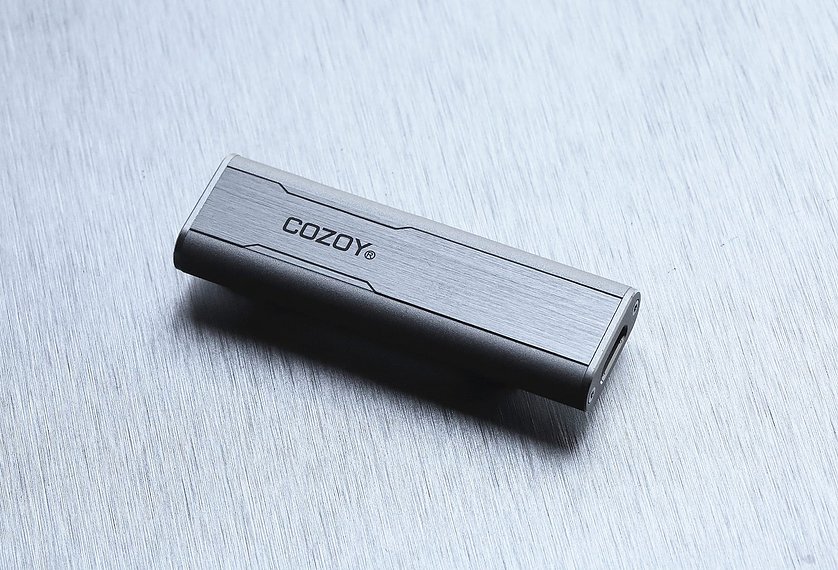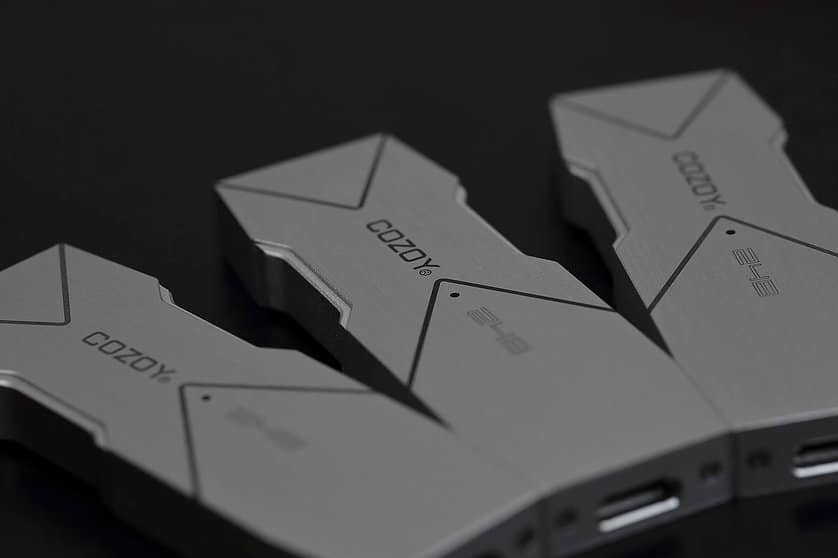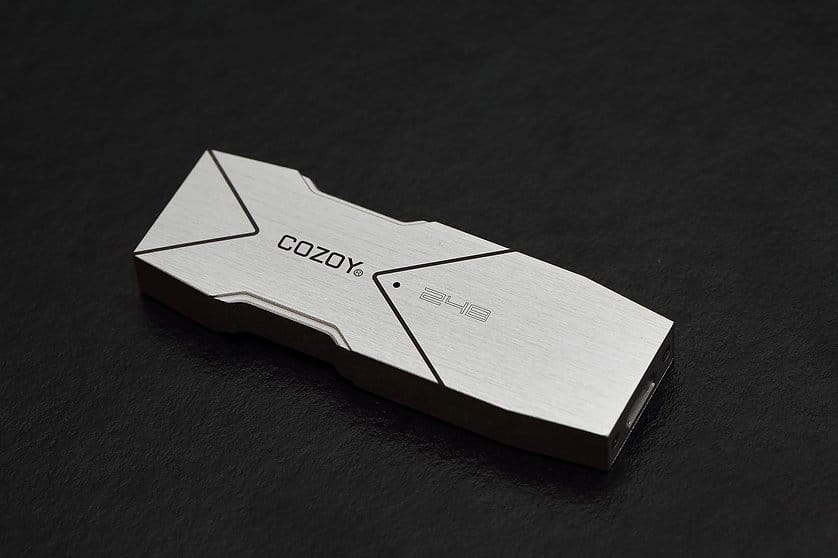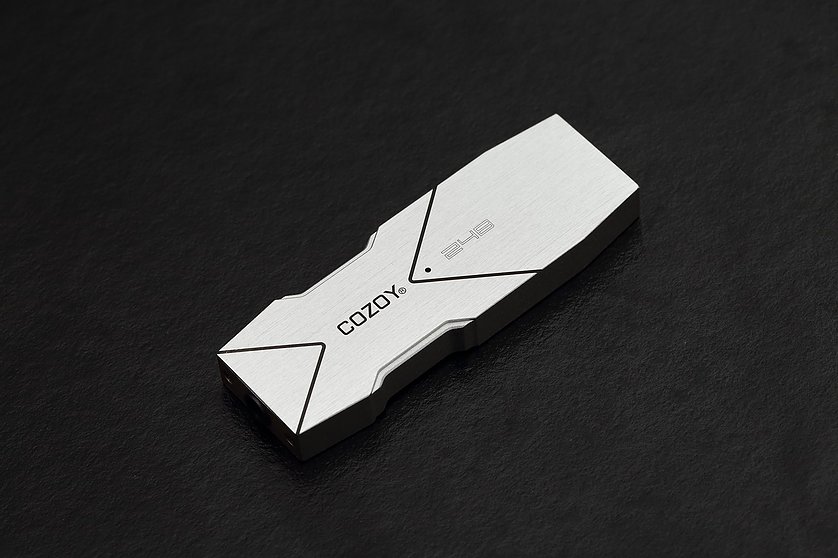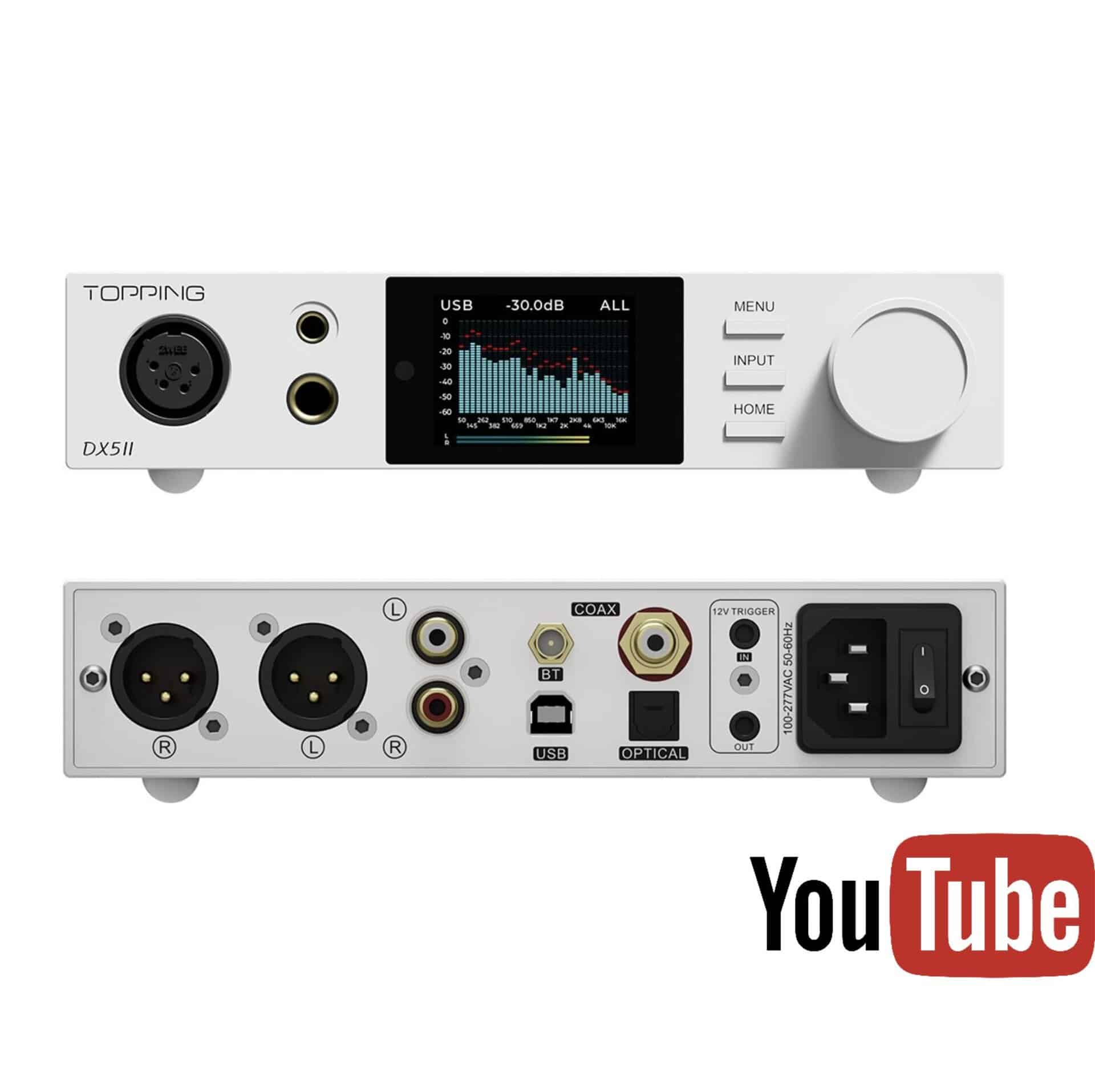The Article
Cozoy Astrapi & Aegis mobile DACs: Nice’n’Cozoy
31st October 2015
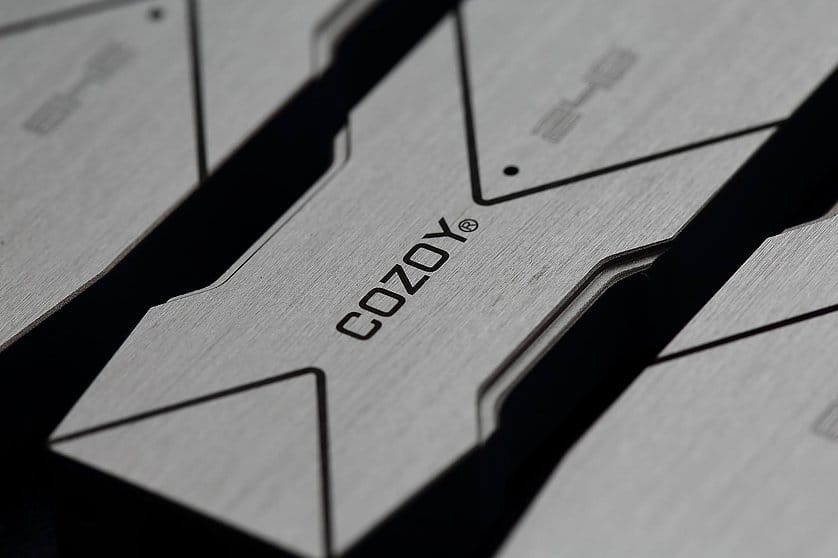
Sister company to Shozy, the two-year-old Hong Kong outfit, Cozoy has released two tiny DACs, Paul Rigby reviews the Astrapi and its more expensive sister, the Aegis
If you’re the sort of person who still listens to your music directly from propriety lifestyle sources then stop it now. No, now. Stop. Put it down. I’m talking to those people who plug a pair of headphones directly into their smartphone, laptop or similar. You know who you are. And yes, I can see you reaching for that phone, buddy. Don’t you dare. Read this first.
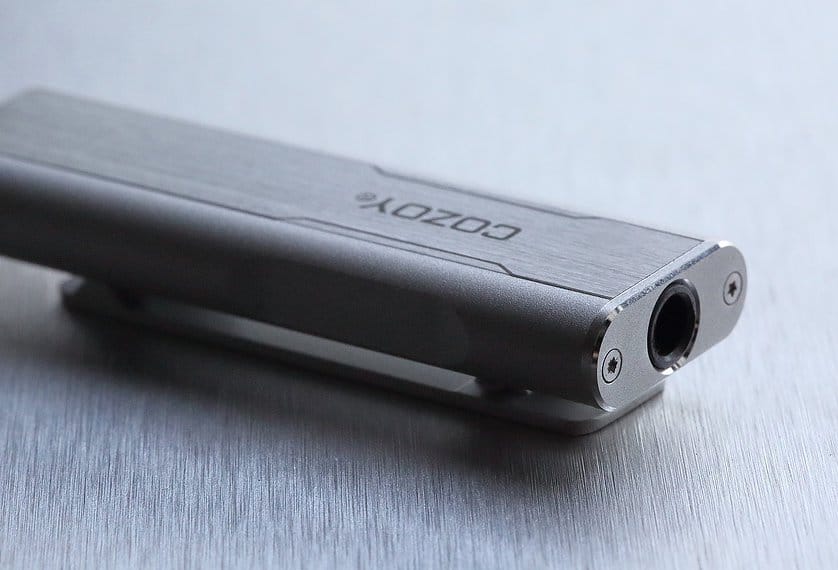
If you care about your ears, value the enjoyment that music gives you and respect the artist(s) who play it then you need to give that music a chance to, well, sing.
Phones, laptops and computers are not, and were never meant to be, top notch music players. They can all do that, yes, but they compromise in terms of quality because they are also expected to do so many other jobs. Hence, if you want to increase the sonic abilities of your favourite ditties then you really need to give your gadgets a helping hand. This is where externally fitted DACs come into play. An external DAC basically takes over the job of converting data into nice noises from your device. DACs are not unusual, your CD player has one, for example. External DACs come in all shapes and sizes but the mobile variety tend to be small in stature, which is where the Cozoy pairing hove into view.
Built using a proprietary DSP (Digital Signal Processing) and conversion technology, these DACs make the most of the small footprint. Apparently, even the included iPhone cable features an Apple chip inside that provides special programming to the units. Reportedely, the technology is sourced from Apple affiliates and is not a common piece of kit. They also act as a mini amp so are capable of driving headphones and mini-speakars directly.
Each DAC is small and compact in design. Based upon a metallic construction, both appear to be robust in nature. Both feature a Line out port positioned at one end and a mini-USB port at the opposite end. The Astrapi resembles a svelte USB stick and adds a useful clothes clip for mobile use while the Aegis doesn’t have the clip but does feature a tiny green light which illuminates during operation.
Both are well designed in terms of handling: the Astrapi (offering performance up to 16bit/44.1kHz) has a textured surface while the Aegis (supporting up to 24bit/192kHz) has an angular form. My own review samples arrived in contrasting packages. The Astrapi (weighing just 8g) was contained in bubble wrap (I assume – and hope – that proper packaging will be available for customers) while the Aegis (weighing not much more) arrived with full and very impressive packaging: a sturdy box that looks like it should be on the shelf of your nearest Apple Store (plus sumptuous velveteen material inside) and a range of cable adaptors that will enable connection to a host of hardware aimed at iOS, Android and PC/Mac laptop USB 2.0 devices, each thoughtfully packed in individual bags.
A note about the plugs, by the way, when a Cozoy version of the Lightning plugs into your iPhone, it stays there, as the USB does on the other end, attached to the DACs, adding confidence for the user. The fit offers the epitome of connective security. Apple itself could do with learning from this.
In use, both DACs follow an easy plug’n’play path and appears to offer a very low power drain, especially when in iPhone use.
My intention was to use both an Apple iPhone and a MacBook as sources, playing CD quality source files from the phone and CD quality plus higher resolution source files from the laptop. I also wanted to insert my excellent Just Audio uHA-120 (£200) and AHA-120 (£350) portable headphone amplifiers into play whenever possible to see if a separate, additional amplifier increased or decreased sound quality. In addition, I wanted to try a range of headphones to compare and contrast with home-based model and mobile headphone units.
SOUND QUALITY
The first test wasn’t just a case of comparative technologies, it was also a test of how and where the source music was emerging from my iPhone. I initially played some jazz vocal via Carol Kidd, fronting a jazz quartet of guitar, drums, bass and piano. She sang How Deep is the Ocean from the album, Dreamsville via a WAV rip.

To begin, I played the file via the phone’s own internal amplifier through the Just Audio headphone amp and to a pair of Sennheiser HD800 headphones. Then, as a comparison, kept the headphones but attached them directly to the Astrapi and then to the power socket via the supplied cable. The difference in sound quality was immediate. The Just Audio amp is a relatively expensive piece of kit but even it couldn’t improve the poor quality internal iPhone amp. Overall sound quality was fair, pleasant and comfortable but nothing more than that.
Plugging the Astrapi into the power port uses the same method as all popular and decent iPhone/iPod docks, which avoids the internal amplifier and connects directly to the innards of the iPhone. In this way, the Astrapi brought light and life to the Kidd delivery which emerged from the veiled midrange cloud and became emotive and immediate while the accompanying guitar added a metallic edge that was just not there before. Piano, meanwhile, was now characterful and nuanced. For the first time, the ear could pick out the start and ending of notes instead the smudge and blur offered by the internal amp while bass now had form and shape. This was a good start.
At the moment, though, the Astrapi was performing a duel role, that of a DAC and a headphone amplifier. Roles it did easily, by the way, without any sense of struggling or wheezing…and this from a pair of heavy duty Sennheiser HD800s. Admirable stuff.
Nevertheless, if I took one of those audio jobs away from the Astrapi and eased the burden would the sonics improve? To find out, I inserted the Just Audio headphone amp in between my HD800s and the Astrapi itself then gave Carol Kidd a gentle push to perform. The improvement in sound quality rose to a new level. It was a simple as that. Now, Kidd’s voice became, not only more detailed and incisive but more intimate. She sounded as as she has stepped up to the microphone and was now making metaphorical love to it. Her delivery was most appealing.
Percussion now sounded larger, grander and bolder with the treble-infused cymbals offering a wide cloud of tremor after each strike. In terms of the guitar? Hearing a guitarist play is more than the plucking of the strings, it’s also about the fingers squeaking along strings and the creaks and bangs around the body. This secondary array of detail was more noticeable while piano grew richer in its delivery. Now, while each note was discernible, I could also hear more information about each and every note.
That a headphone amplifier should be hung off the Astrapi was a complete no brainer. I decided to keep it there throughout the rest of the review.
I then turned to pop as Kylie Minogue’s All the Lovers from the Abbey Road Sessions. Minogue’s voice was, again, close up and personal but noticeably separate from her backing vocals, there was a distinct space between the two. In fact, the strings that joined later maintained that space as did the bass that added to the large soundstage effect plus the 3D structure of the same.
I was impressed by the clarity of this track from the Astrapi. At no time was there any suggestion of smudging mids or brightness from the same while the bass, while not too punchy, maintained weight that grounded the music successfully.
So how would the Aegis perform over the same two tracks? It’s a more expensive option so should, by rights, be better but would it be and, if so, how and where?
For Kidd, the Aegis was noticeably focused and precise. This was a lean and mean delivery from Kidd’s vocal, there were no extraneous frequencies lingering around her voice, the vocal was busy and no-nonsense in tone.
Further, while there was a certain warmth and romance via the Astrapi, the Aegis offered a slightly clinical truth to the vocal. That’s not to suggest any brightness or stridency, there was none of that. Upper mids and treble remained balanced and neutral in terms of tone. In fact, it was a tonal reality that the Aegis offered. The guitar followed suit, providing a down to business performance while providing a heap of sonic information that left nothing to the imagination. The piano performed in air and space. Notes had room to manoeuvre, each key strike offered a svelte and, you felt, truthful playback. The soundstage was also packed with detail. Previously subtle elements of the mix now waved out to you, each determined to be noticed.
I turned to Kylie Minogue whose vocal was now more distinct, offering a slightly nasal quality that was previously missing while the introductory guitar strumming now provided a sparkle and vibrancy, backing vocals offered a new clarity and the strings had a epic quality to them. Then the bass kicked in and the feet couldn’t, I’m afraid, stop tapping. The Aegis was interminably funky in its musicality, dragging you into the performance, demanding that you higher the volume.
So did other headphones cope with the DACs at this time? After all, the HD800 might be a useful tool for journalists but could also be seen as overkill for day to day use on the road. I tried the new Sennheiser Momentum 2.0s (£270) which are much easier to drive than the HD800s and far lighter in weight. The Momentums responded well. The upper mid emphasis (useful when walking next to busy main roads) fed upon the extra detail from the Astrapi/Aegis giving the Minogue track a ‘bigness’ and ‘grandness’ while, in the Kidd track, adding simple instrumental separation that gaves the ear a sort of false clarity that also helps music performance in a busy city centre.
Moving to the lower cost B&W P3s (£70) which have an inherent bass emphasis also performed well. While losing the detail on offer from the Momentums, I felt that the cheaper headphones better matched the Astrapi. In many ways, the Aegis offered too much detail, it was too good for the B&Ws, creating a slight sonic mess. Here, detail in the upper midrange fell over each other. In this case, for this level of headphones, the simpler Astrapi kept the B&Ws under better control.
A TRACK FROM THE MAC
Next on the list was the Macbook, powered by an internal SSD drive, to reduce vibrations and improve sound quality. The change from iPhone to laptop warranted a change of cable, again supplied by Cozoy. To find a reference, I plugged the Just Audio headphone amp directly into the MacBook’s own audio output socket, accessing the internal DAC. Booting up the audiophile quality Audirvana Plus music player, I listened to a WAV rip of A Nightingale Sang in Berkeley Square from Carol Kidd from the Dreamsville album then, later, turned to the Astrapi which was plugged into one of the MacBook’s own USB sockets.
The difference between the two outputs was similar to that found on the iPhone using the Cozoy hardware when comparing music output via the power outlets and the internal amp. Here, the Astrapi DAC, directly accessing the MacBook’s music via the USB port, opened up the soundstage, giving Kidd a broad and spacious area in which to perform. Not only did her voice (and the expansive treble from cymbal strikes) now hang in a gentle cloud of reverb but the later guitar solo had an attention grabbing tonal realism. Each plucked string was drawn with some force, an effort that made some sense now via the Astrapi. The bass also had a sense of form and character while piano was no longer a gang of notes moving generally in the same direction but an instrument with a story to tell.
The Aegis take on the track reintroduced me to the intimate Kidd delivery while her accompanying reverb now sounded better structured and her voice now seemed part of the backing quartet. You could hear her among the group, adding realism to the arrangement. The guitar, which was a fast-paced affair, could blur with lesser DACs but not here. The Aegis had its beady eye on every single note as each was successfully tracked. Bass offered more heft and personality while piano supplied a lighter touch becoming a more subtle backing instrument.
Taking advantage of the Aegis’ own superior specifications, I played Big Bad Girl at 24bit/96kHz from blues shouter, Harry ‘Big Daddy’ Hypolite. There’s always a threat, from this track, that Hypolite can drown the accompanying guitar with his brash vocal performance. Not here, the subtle guitar accompaniment could clearly be heard while his own vocal delivery offered both dynamism but also a layered structure that told you that this was an ageing blues force but a man who could still scare the life out of you if he really wanted to with the sheer energy of his blues performance.
Turning to 24bit/192kHz and Tchaikovsky’s Souvenir de Florence op. 70: I. Allegro con spirito, the Aegis really came to life, filling the soundstage with a garland of detail and information. The excellent instrumental separation prevented any sonic bleeding between the banks of strings. There was always space between violins and cellos, for example, while the odd plucked string showed both precision and focus in action.
For this piece, I ‘upgraded’ the headphone amp to a Just Audio AHA-120 (£350) to see if there was more fuel in the Aegis tank at this resolution. There was and how! The sound now had a full, rich output. The uHA-120 almost seemed unable to give the Aegis room to perform which resulted in a slightly constricted, even strident presentation in comparison. The more expensive AHA-120, though, allowed the Aegis space to transcribe the music with ease. Now, there was an added suite of lower frequencies that gave the Aegis a far better balanced output while the soundstage breathed a sigh of relief and offered a relaxed reading of the music.
CONCLUSION
This is a remarkable pair of DACs that will not only enhance the sound quality of your smartphone and laptop but will transform it completely. Both are small and robust in size and easy to use. Both units benefit from partnering with a headphone amp of some description. The Astrapi is ideal for casual mobile use with lower quality headphones in the ‘real world’ hustle and bustle where noise is plentiful (walking along roads or on the High St) and space is at a premium (buses, trains, etc) while the Aegis provides extra quality and finesse. You can use the Aegis within those same busy environments but, to get the very best out of it, you really need a quiet environment to full enjoy what this little beauty can provide: an office maybe or a quiet park bench perhaps? The Aegis really needs top quality support equipment too in terms of IEMs (which ran without any problems) or a superior set of on-ears and a superior headphone amp to really allow the Aegis to ‘do its thing’.
Both DACs are complete and utter bargains. For example, if Astell & Kern were selling the Aegis (and the slick design of the Aegis could very well derive from such a company) then I wouldn’t be surprised to see it rated at over £1,000.
For any audiophile user, both DACs should be part of your day-to-day mobile toolkit.
COZOY ASTRAPI
Price £101 (approx. with P&P inc. or €109 from www.audiophonics.fr. The latter has a slightly different chassis adornment displaying extra shine)
Website: www.cozoyaudio.com
(Notes: You can buy direct from the Cozoy website using Paypal, approx. prices relate to the varying currency conversion rates and any Paypal charges that you might incur)
Good: small chassis, design, price, overall sound quality
Bad: nothing at the price
RATING: 8
COZOY AEGIS
Price: £187 (approx. with P&P inc)
Website: www.cozoyaudio.com
(Notes: You can buy direct from the Cozoy website using Paypal, approx. prices relate to the varying currency conversion rates and any Paypal charges that you might incur)
Good: detailed upper mids, broad soundstage, solid bass, stylish presentation, price
Bad: nothing at the price

